On to destination two: Munich! This was a shorter stop but no less a part of the trip, so it gets its own post. We rode from Berlin to Munich on the Deutsche Bahn, a quick four hour ride. We got up to speeds of 160km/hr but the train was amazingly smooth. Truly, the best long-distance train ride I’ve taken to date. If any Germans feel Deutsche Bahn isn’t all that great, consider a “quick” ride from New York to Washington DC on the Amtrak. It’s less distance, takes longer, and is considerably less smooth. You’ll return with a newfound appreciation for Deutsche Bahn, I promise!
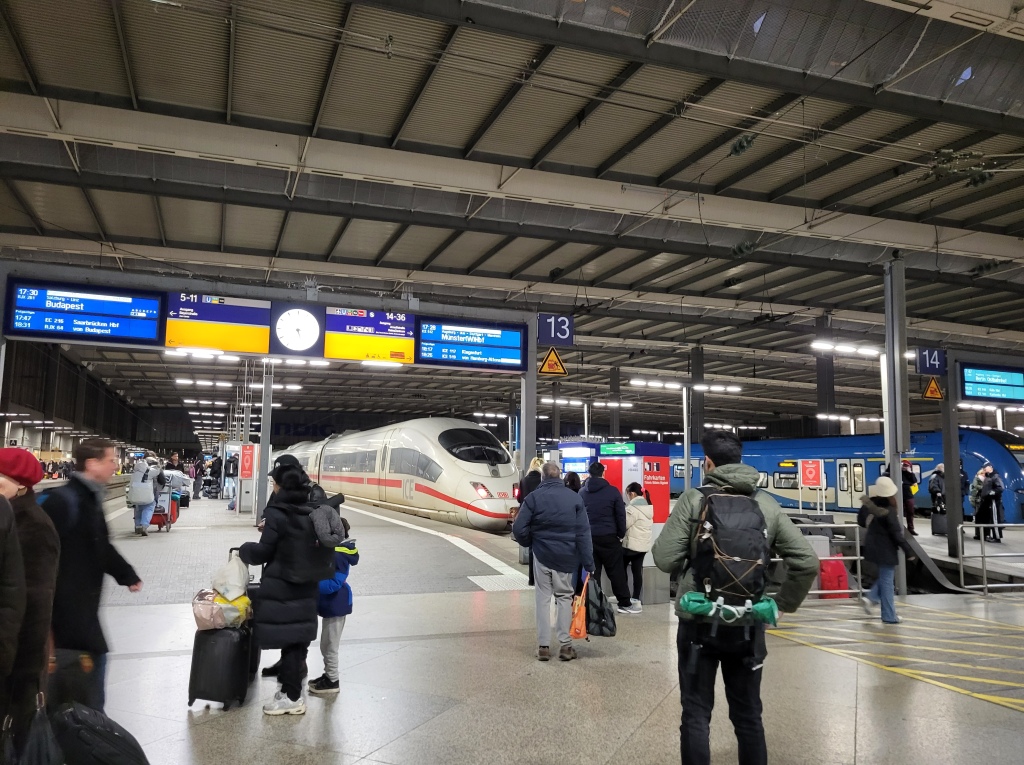
After resolving a hostel flub (we booked the wrong location) and getting lost in Ostbahnhof station for a good fifteen minutes, we managed to set our bags down and head out into the city. Munich felt distinctly different from Berlin, almost across the board. Overall, the city feels German in a way that Berlin doesn’t. We overheard more German than any other language, as contrasted with Berlin where it was a hodgepodge of essentially every language. Amy also noticed that the populace in Munich was a wider range of ages. The dogs were cute in both places though. We checked.

While we knew it to be a bit of a tourist trap, we couldn’t resist heading to the Hofbräuhaus for dinner. I worked my way through a full liter of beer and Amy worked her way through a pretzel as big as her head. The experience was worth it, but I ultimately have to agree with what our tour guide would tell us the next day, “It’s a great place to go for your last beer; by then the tourists will be gone and you will be so drunk you won’t be able to tell the difference.”
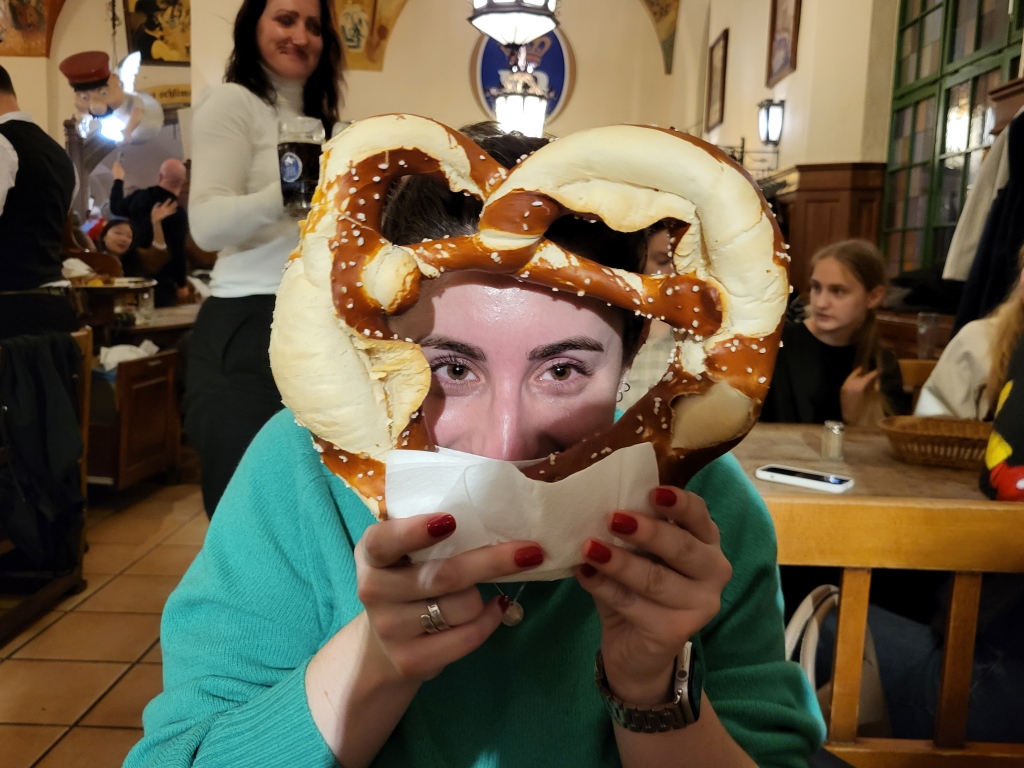
The next morning, we woke early to prepare for the main reason we inserted a one day stop in Munich: We planned a full day tour at Dachau, one of the first concentration camps built by the Nazis. Growing up Jewish, I learned about the Holocaust frequently. We watched movies, we read accounts by former prisoners, we examined the high level history that preceded the final solution. Even after a teenage life steeped in what should have been pre-work for this experience, I was truly not prepared for the contents of the tour. I fully believe that every person should take a tour of a concentration camp at some point in their life. They chronicle one of the darkest episodes in human history, and we all must find the courage to face them head-on.
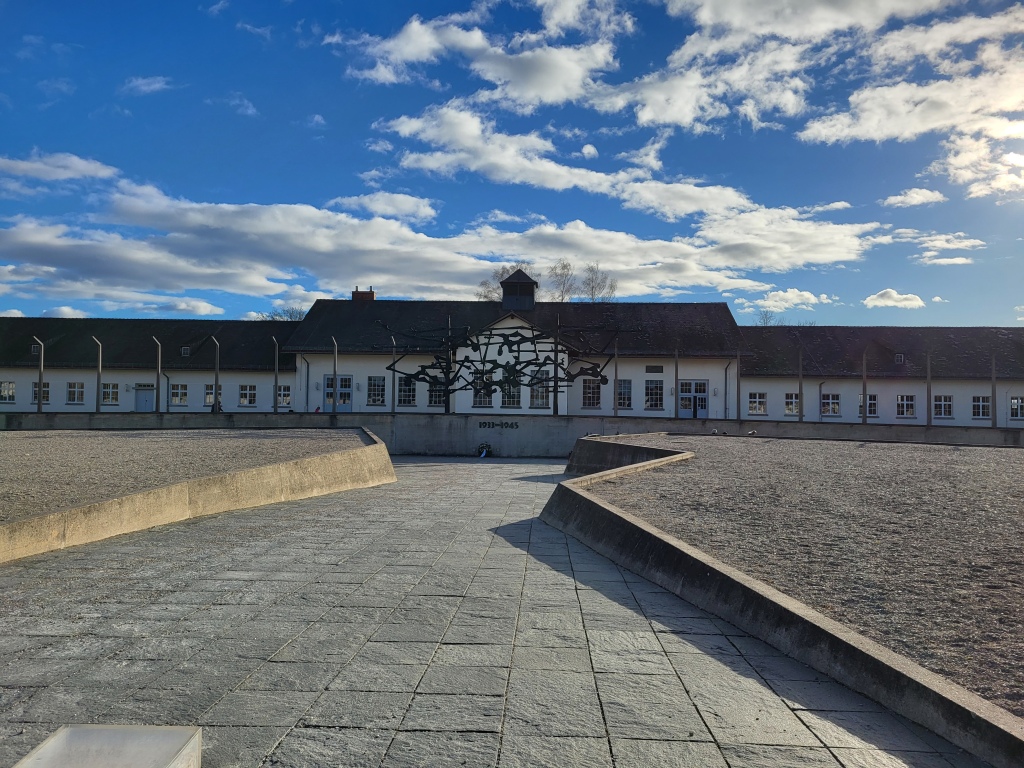
The tour corrected a number of misconceptions I had about concentration camps and the Holocaust writ large. First, that concentration camps were developed and utilized only within the context of World War Two: Dachau was opened in 1933, six years before World War Two would even begin. In the six years between, Dachau was used to refine the formula of how to optimally torture and dehumanize. We walked through reconstructions of barracks and saw how the number of beds in each room increased exponentially through the years. We walked through an early gas chamber, later improved because the early design subjected the guards to prisoner screams. It was horrific, in the truest sense of the word.
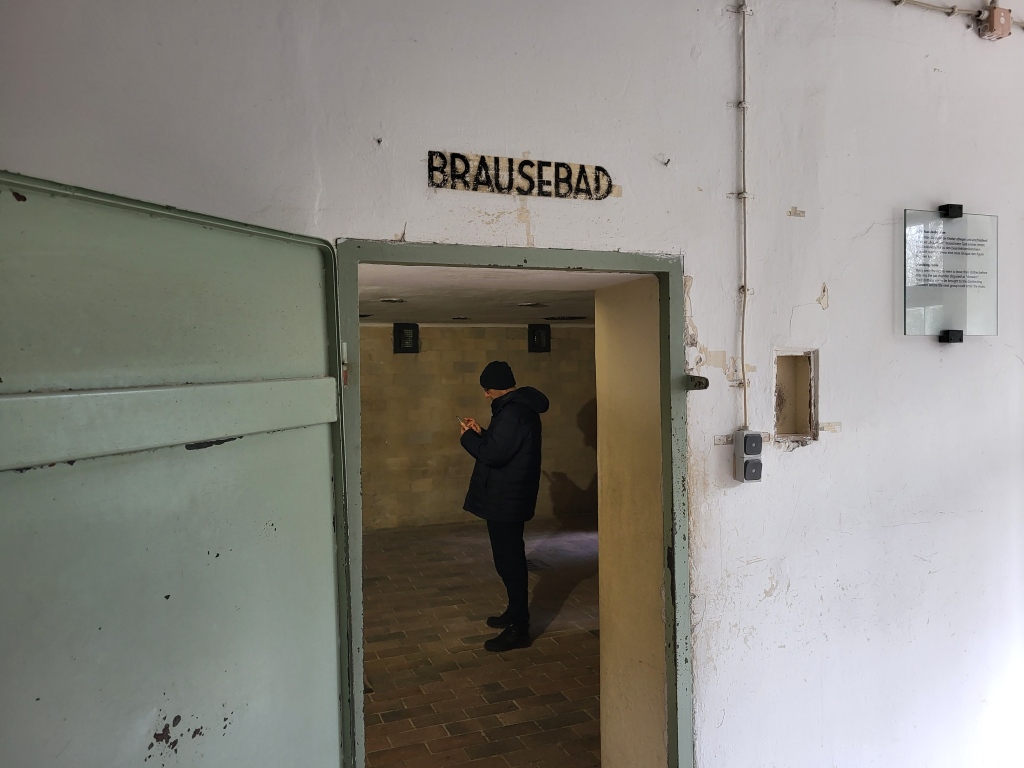
Second, the Holocaust has always been pitched to me as targeting Jews, plus others. The more I learn, the more clear it is that the Nazis were far more far reaching in their distribution of punishment. Anyone who did not fit into their ideal mold was a candidate for the camps. While some reasons were racial (being Jewish, being Sinti or Roma, having even slightly darker skin), others were lifestyle (being a pacifist, being an alcoholic), and still others were simply opposition to the Nazi party in any way (having left-leaning political views, working slightly less hard than you should). While this should not diminish the cataclysmic impact the Holocaust had on the Jewish people, it seems to me that had the Nazis run out of Jews to kill, they would have happily continued onward with the next targeted group in line.
Third and finally, I had always believed that the goal of every concentration camp was death, as efficient and quick as possible. After all, with so many people committing so many “crimes.” (for example, not paying multiple parking tickets), there’s always another prisoner, always another condemned. Even the gas chamber has been taught to me as a brutally efficient means of dealing death on a massive scale. If the prisoners could only die faster, that would be more efficient, more ideal. Touring through Dachau, I was stunned by the amount of effort put into extending the deaths of prisoners, of developing more and more cruel ways of killing, even if they required drastically more guard resources to execute. In one particular example, a small room was set aside to house a single prisoner in complete darkness. They would be kept alive, for a full year, only to be forcibly blinded by the sun and then shot seconds later. It is clear that assigning guards to perform this work was lowering the total death count of the camp; so much attention on one prisoner, kept alive for so long. Yet, the goal does not seem to be death alone. The increase in suffering, the increase in torment, was somehow the purpose of this place.

Over the years since the end of World War Two, these camps have been transformed into memorials. Small chapels, art, and mementos have been added, dedicated to those who lost their lives here and to those whose lives would never be the same. Doors throughout the camp are permanently open, as a symbol that this place will never again trap a soul within its bounds. Most importantly, tours are held 364 days a year for any who would come to learn. I truly think that everyone should take them up on the chance.
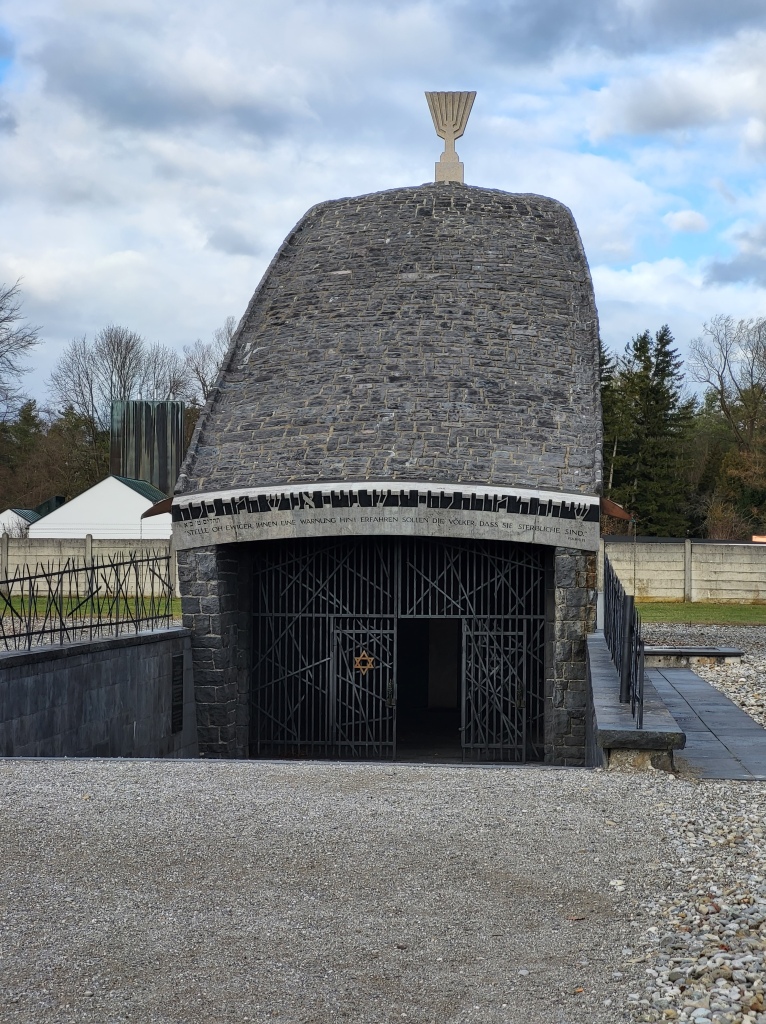
Back in Munich, we had only a few hours left before our flight to our third and final destination. We talked to our guide for a few more minutes on the train ride back and he heartily suggested Schneider Bräuhaus. Located only a couple blocks from Hofbräuhaus, Schneider Bräuhaus was clearly the “real” version of the same idea. We shared a table with a bewildered looking older local couple and chowed down on roast pork and kaesespaetzle. To top it all off, I had a secret tip: Our guide was adamant that Schneider Tap #4 was The Best Weissbier In The World. Of course, I promptly ordered a bottle and even had it poured for me in just the correct style. How was it? You’ll just have to visit to find out! (Or find an international beer outlet, I suppose. But you should visit!)
